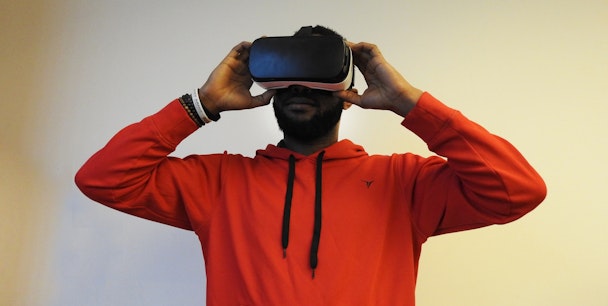Retailers must skip AR and embrace VR
With the launch of Facebook’s Oculus Go headset at the beginning of May virtual reality (VR) is finally ready to hit the mainstream. At a price point of £199, free from wires tethering the user to a computer or smartphone, offering access to increased content and providing a better experience than ever before, there is an expectation that VR will finally start to live up to the hype that has been generated around it over the last couple of years.

Embracing virtual reality
The new VR opportunity for retailers
With products like Oculus Go finally coming into the market that can effectively bring VR to the masses, it’s time for retailers to jump on the bandwagon and recognise the new opportunities it offers.
The most important is the enhanced ability of VR to deliver more exciting experiences to consumers. In particular, delivering stand out interactive shopping experiences that empower consumers to make better informed decisions.
The latest developments also help VR improve the retail experience in a non-intrusive way, becoming a more seamless extension of online shopping whether in-store or at home.
Within the in-store environment VR will play a greater role in helping retailers brand build and improve the customer experience. For example, Topshop launched a VR experience in its flagship store allowing consumers to ride a virtual water slide through a recognisable Oxford Street.
More interestingly the latest VR technology offers the opportunity for retailers to cut back on the size of their retail outlets, thus potentially saving them money. Why have so much product taking up space in an expensive high street location when the sheer spectacle of VR, which provides access to a retailer’s entire product range, will do the job of driving sales with minimal space required.
Another way to use retail space effectively is to set up virtual showrooms. Using VR, consumers could pick out products - such as furniture or white goods - and place them virtually in a ‘generic home’ setting giving them an idea of how it could look in theirs. With consumers viewing items in this intimate fashion they’re far more likely to pull the trigger on a purchase - especially if the product is a big-ticket item - which many would rather see and experience in person first before spending money. Ikea have taken this approach and recently unveiled its online virtual reality destination in Australia, which allows customers to experience in-store floor sets as if they were there, as well as make purchases and have them delivered.
On the home front virtual shopping will become an extension of online shopping – though one that offers much greater value for the consumer. Shopping for clothes could be transformed. No more traipsing around stores to hunt and try on clothes that look good and, importantly, fit. All consumers would need to do is put on a VR headset in the comfort of their home and virtually head to their favourite stores. They could look at what they have to offer and try on the clothes virtually on a computer-generated model designed to match their body type. Then simply purchase in the technology and have the clothes delivered or pick them up in-store. According to research by management consultancy firm L.E.K 70% of consumers want to use v-commerce to try on clothes and accessories and to customise them.
What about the role of AR?
The evolution of VR technology is, in my opinion, set to be the death knell of augmented reality (AR) in the retail environment, as it will enable retailers to offer an immersive stand out experience and end to end customer journey that AR can’t compete with. AR has little application in the fast-growing ecommerce sector, when to date it’s been mainly used in physical stores.
Instead, AR is increasingly evolving into a tool that adds value by helping people in their working lives, or in undertaking daily tasks while out and about. For example, in the working world AR glasses that display vital medical data during procedures are set to help medical practitioners in their roles. Or AR in a vehicle could involve a display on the windscreen showing what’s in the driver’s blind spots, their speed, GPS route, the braking distance and highlight if a pedestrian is getting close, among other information.
VR is a retail necessity
The recent developments in VR mean that it’s set to be a serious player in the retail world. It will increasingly be a staple of our everyday shopping experiences - whether in-store or in the home – by enhancing the shopping experience and making it more exciting and informative. It’s only a matter of time until shopping via VR is set to be as common as one-click ordering.
Its vital retailers embrace the new opportunities offered by new VR technology if they are serious about driving sales and profit margins as well as companies like Xigen providing the E-Commerce Website Design to make advancement in VR technology happen for the retail industry.
James Pruden, studio director at Xigen
Content by The Drum Network member:

Xigen
Xigen is the full service digital design agency you can trust to produce straight forward marketing strategy and execution, helping you grow your brand and develop...
Find out more
